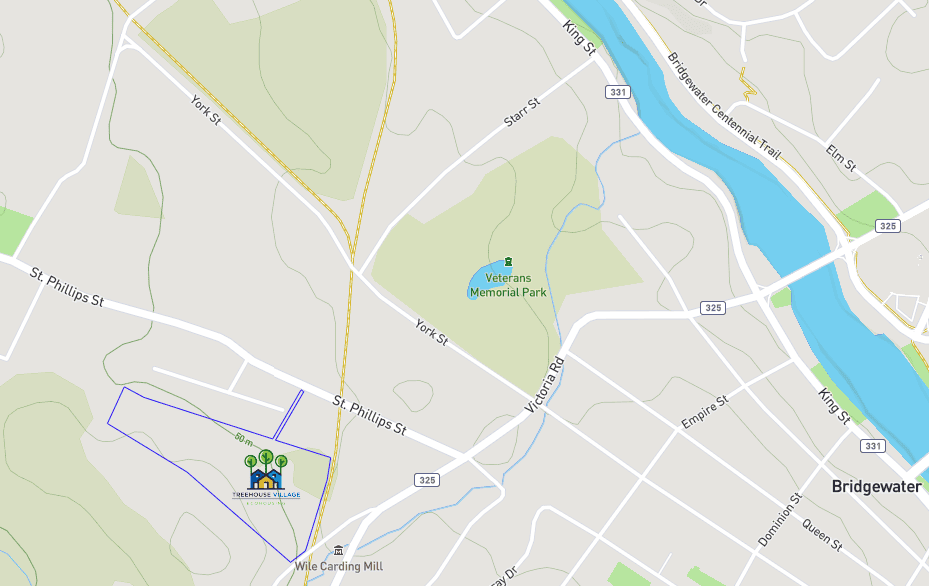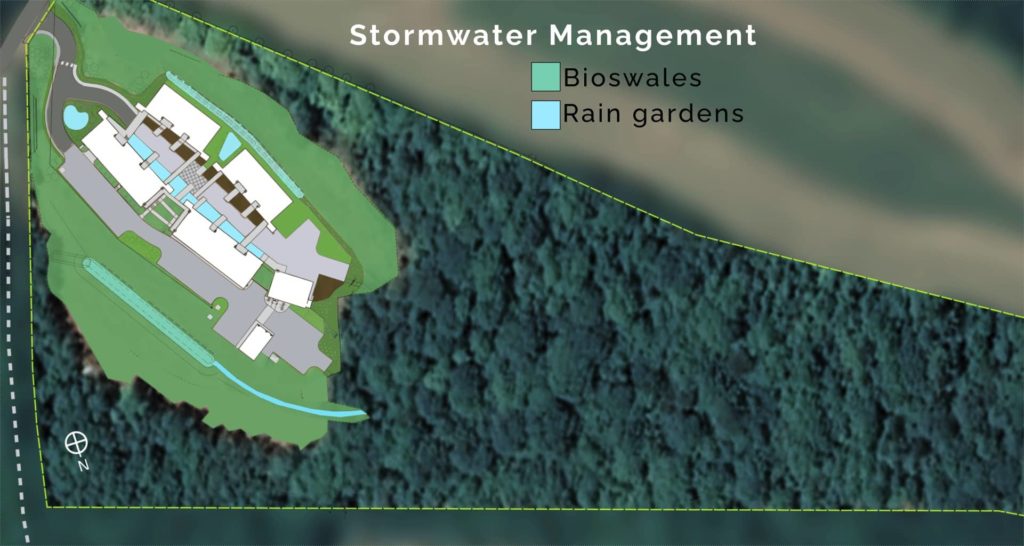With the extreme weather we are seeing, the resiliency of Treehouse Village is at the forefront of my thoughts. When Scott and I first decided to move to Nova Scotia, location was top of mind. We wanted to make sure that we were not on a flood plain. We also wanted to ensure that we were not too close to the ocean, so rising sea levels and severe weather would not be of concern.
When Treehouse Village was designed, the changing climate was front and centre in our decision making. As I write this, I’m looking at a chart from 2019 where we looked at a variety of things that could happen (e.g., hurricane, winter storms, flooding, rain, wildfire, and heat waves). Each of these were considered when creating the site design.
The land we purchased is well above the LaHave River (approx 150ft elevation), and Bridgewater is more than 20 km upriver from the ocean. We are not quite at the top of the hill, but we are at least three quarters of the way up. Far enough that we are not worried about water from above and we are not worried about water from below.

We asked our landscape architects to create a design that avoided any water issues onsite while managing our storm water so it doesn’t use the Bridgewater storm sewers. As a result, the site will have a series of rain gardens and bioswales which allow water to flow away from the buildings and be retained and filtered without causing damage or soil erosion.

Our homes are being built with ICF (Insulated Concrete Forms) to a Passive House standard, with metal siding and roofing. This means that they will be resilient from high winds and extreme temperatures (both hot and cold). Each home will have an energy-recovery-ventilator (ERV) that allows fresh air to be brought in from outside without changing the comfortable temperature and humidity inside. In this way, the homes are protected from the elements and yet they breathe. Further, each of the homes will have an option to install a heat pump which provides additional heating and cooling. Although a heat pump will not be needed for heating in winter, it can provide cooling and dehumidification in summer for those who are more sensitive to heat.
Living in Nova Scotia, you quickly learn that major storms sometimes bring power outages. Our first visit to the Treehouse Village site was in 2019, the day after Hurricane Dorian hit. We have designed power resiliency into our common house, with key systems connected to a large backup battery. We are planning to install solar on all available rooftops which will allow us to generate solar energy to offset our electricity consumption and for use when the power goes out. Our aim is to have enough energy to supply the common house for three days (not including the clothes dryers, but including the elevator, ventilation, heating, cooking, and refrigeration). We will have a comfortable shared space for those unfortunate times when we lose power.
And we should not forget the biggest benefit of Treehouse Village, the resiliency of the community itself. We will be there to support each other. We are looking forward to being part of a vibrant, inclusive, multi-generational community living lightly on the earth.

Leave a Reply